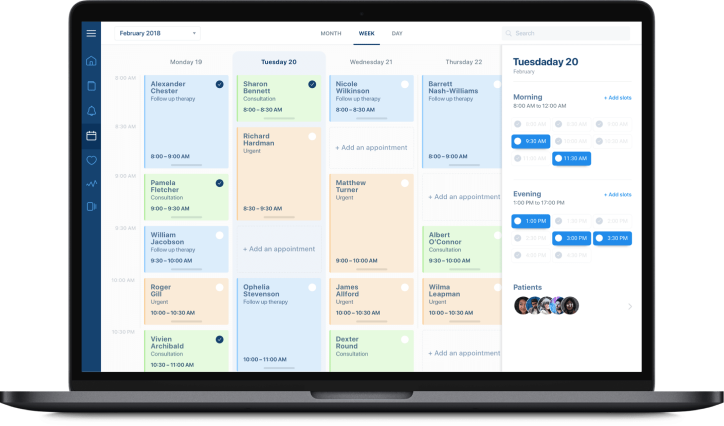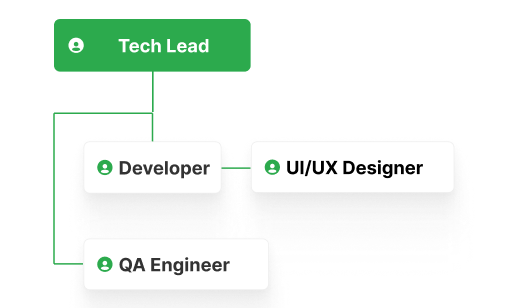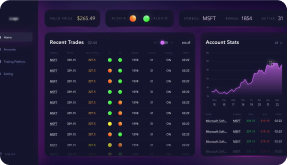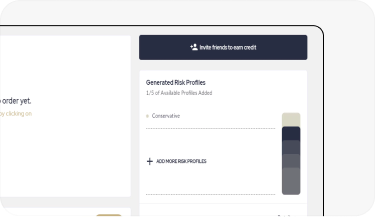Blockchain Investigative Tool
A blockchain investigative tool for law enforcement and financial institutions that tracks suspicious transactions and identifies related entities using advanced analytics and data scraping.



About the Client
Our client is a company based in the Netherlands that serves financial institutions, government agencies, and crypto businesses and offers tools to simplify blockchain investigations and AML compliance.
Project Background
The client initially approached us to create a blockchain parser. As we showcased our expertise in the blockchain domain and our strong work culture, the client also entrusted us with the development of an analytical system. This system serves as a blockchain investigative tool for law enforcement and financial institutions, offering a comprehensive view of the public blockchain ecosystem. It employs advanced analytics and data scraping to monitor suspicious transactions and identify associated entities.
Project Team


Engagement Model
Fixed Price
Tech stack
Solution Overview
The analytics tool serves as a comprehensive web-based solution tailored for our client’s analyst team, streamlining their workflow and enhancing efficiency in managing address mentions and entities within their ecosystem.
Functionality
The tool allows users to add, store, view, and approve address mentions from different sources. It also enables users to generate offchain migrations based on these mentions and easily add or edit entities.
Tool interface
The user interface mainly has a table view with features like filtering, searching, sorting, and selecting rows for actions. It also has separate tabs for adding and editing data, using a form-based view for simplicity.
User roles
There are three distinct roles: Researcher, Approver, and Administrator. Each role contributes to the overall efficiency and security of the system:
Researchers can view mentions, utilize filters, sort, and search; add, remove, and tag mentions; send mentions for approval; access additional information; add and edit entities.
Approvers have all the permissions of a researcher, plus the ability to add and edit sources, and generate migrations based on mentions.
Administrators have all Approver permissions, and they also have the additional capability to add and remove users, as well as manage user roles within the system.
Security and access control
To ensure strong security, the tool requires a unique username and password that meet complexity requirements. Additionally, multi-factor authentication provides an extra layer of protection. The tool is hosted in a separate network and can only be accessed through Infrastructure VPN, reducing exposure to the public internet.
Logging
The tool maintains detailed logs for all user-based events, such as changes, permission/role escalations, logins, and logouts. This logging mechanism improves accountability and provides a traceable record of system activities.
Project Approach
Scrum was used as the foundation for an agile and iterative development process, allowing for collaboration, adaptability, and transparency through time-boxed iterations known as sprints. We also chose a fixed price model to provide financial predictability and accountability, ensuring our client understands the project costs upfront and minimizing the risk of budget overruns, while also committing to delivering a fully functional analytical tool within the agreed timeframe and meeting the specified requirements. Throughout the one-month development cycle, key milestones and deliverables were established to track progress and maintain alignment with project goals, and regular sprint reviews and retrospectives were conducted to evaluate the delivered features, gather feedback, and make necessary adjustments to optimize the development process.
Technical Solution Highlights
In conclusion, our technical solution combines a powerful Python-driven Microservices backend, a sophisticated TypeScript-based frontend, strategically chosen databases, and seamless integration with prominent blockchain networks. This comprehensive stack ensures a robust, scalable, and user-friendly blockchain investigative tool tailored to meet the complexities of blockchain data analysis and exploration.
Backend
Our blockchain investigative tool utilizes a robust backend foundation, with Python as the primary language. The Microservices architecture enables independent development and deployment of services, enhancing scalability and facilitating efficient maintenance. Leveraging the Django REST framework, we build secure and scalable APIs for handling diverse blockchain data. Intuitive API documentation through Swagger enhances developer understanding and collaboration. Asynchronous task execution is streamlined with Python Celery, enabling efficient processing of tasks like data parsing and analysis. Our tool seamlessly integrates with blockchain networks, including TRON and Algorand, using gRPC/JRPC protocols for communication and data retrieval.
Frontend
The frontend is built using TypeScript and Angular, providing a seamless user experience with a modern and responsive interface. TypeScript enhances the robustness of our frontend by introducing static typing, increasing code quality and developer productivity. Angular ensures a dynamic and feature-rich user interface, offering a cohesive and interactive experience. The integration of Angular Material contributes to a visually appealing design, following UI/UX best practices. Standard web technologies like HTML and SCSS are used to create responsive and stylized web components.
Databases
The tool utilizes a carefully selected set of databases to efficiently manage and store blockchain data. PostgreSQL, a powerful and relational database, ensures data integrity and scalability, making it an ideal choice for complex blockchain-related information. Additionally, we incorporate RocksDB and LevelDB, which provide efficient and high-performance storage solutions specifically designed for blockchain data.
Results & Future Plans
In just one month, the cross-functional team at Itexus developed a fully-featured blockchain investigative tool for our client’s analytics team. The tool completely met the client’s requirements. Currently, we are working on introducing advanced functionality to the system.
Discuss your blockchain investigative tool needs with us.
A mobile banking app that allows its users to access all banking services in a secure, convenient and fast way without having to visit bank branches.


